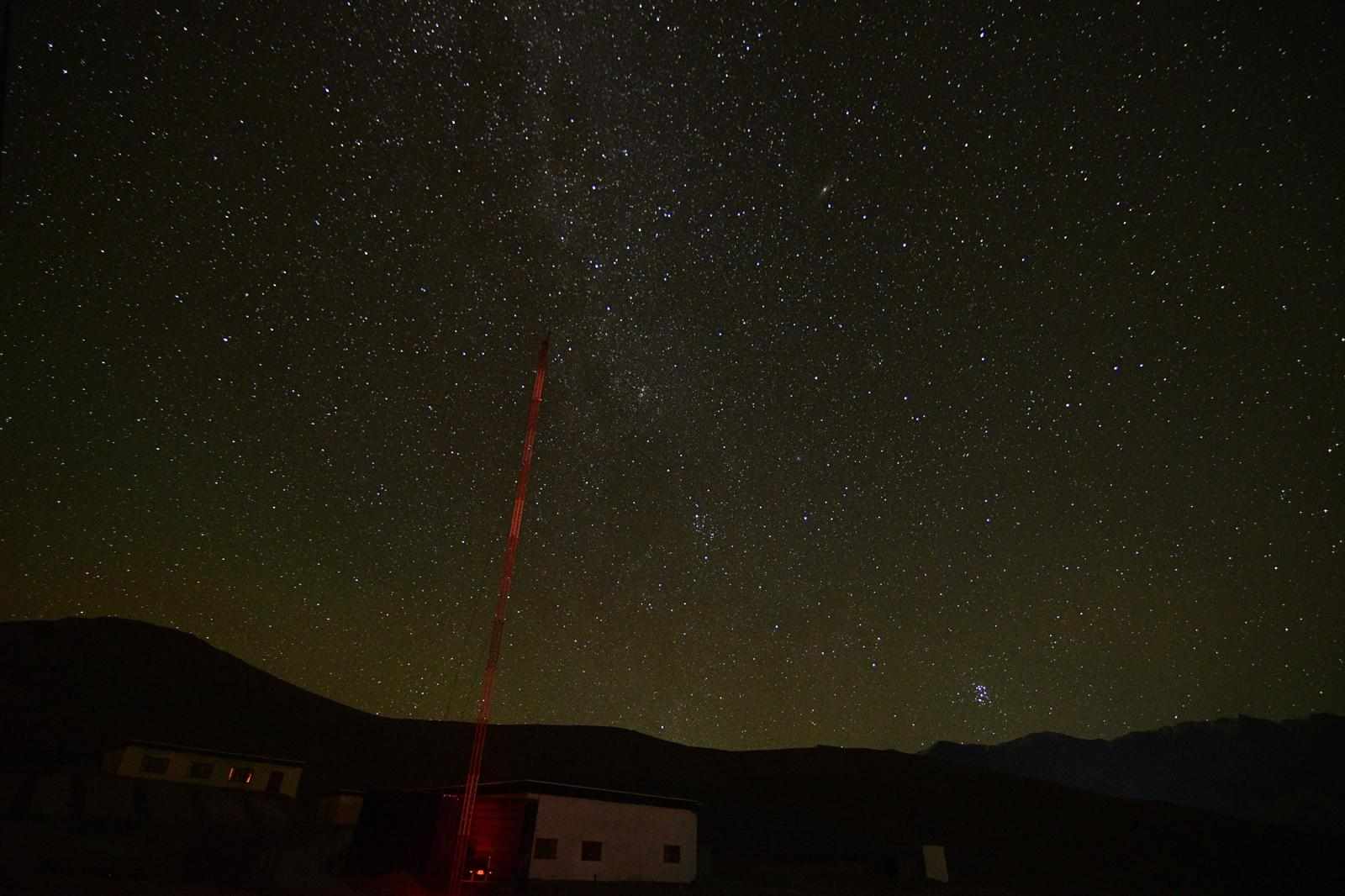
We had been warned. It will be bitterly cold. Totally dark. You're at 14,000 feet. There's less oxygen in the air than at home. You'll fumble with the buttons on your camera. Your mind will get befuddled, you'll walk slower, you'll feel the strain of going up even gentle ramps.
With all that in mind, late one night I decided to take a break from hours of photographing the night sky. Thought I'd spend an hour or so downloading what I had got already that night. Must have been about 1:30am when I turned the camera off, made sure once more that it was securely fastened to the tripod, and trudged the 10-12 minutes to the dining hall, the last part up a gentle ramp. Find a chair, catch my breath, warm up a bit, do the download, take a 20 minute nap and head back out - such was my thinking.
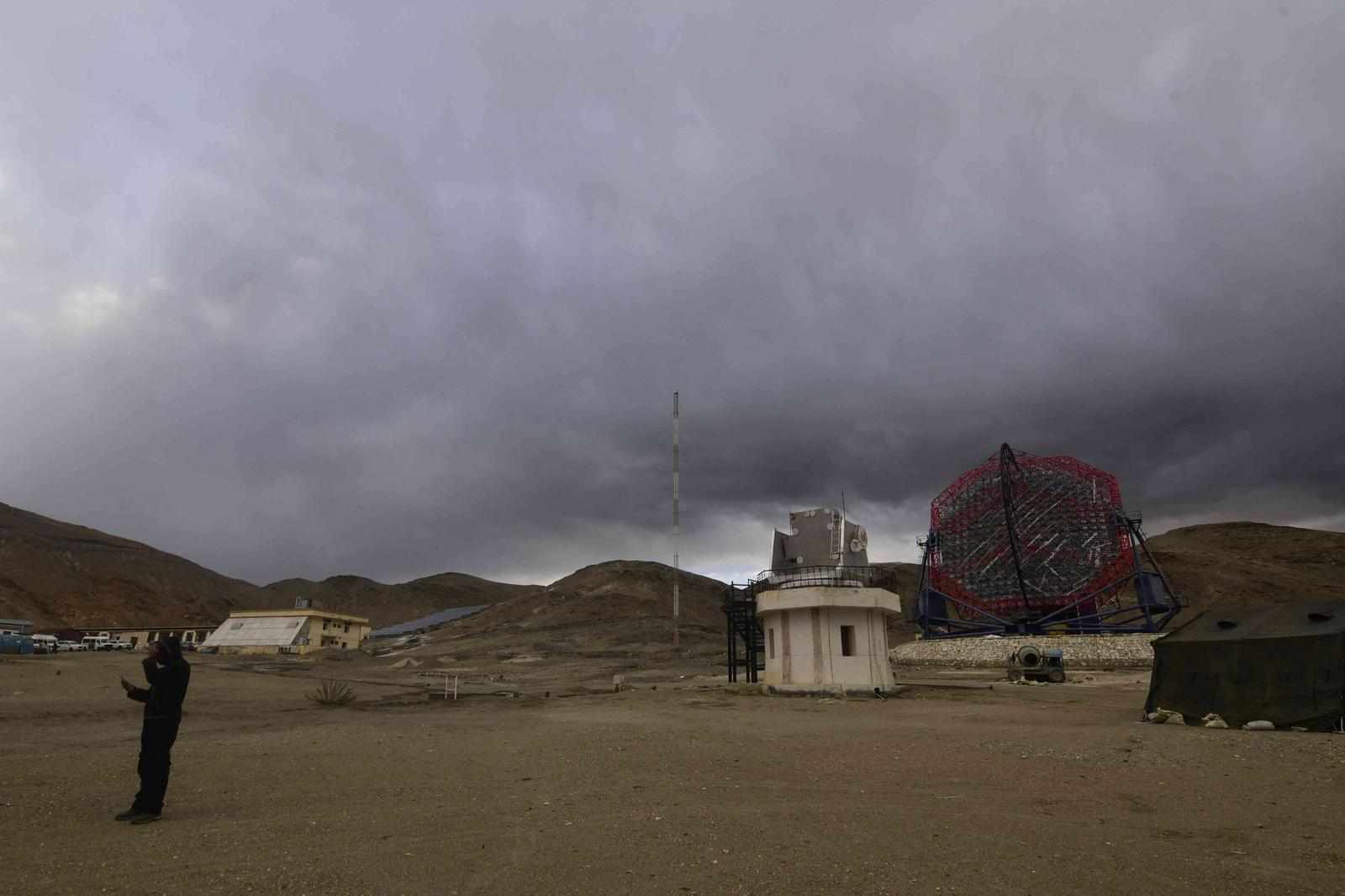
At Hanle, we could set up more or less anywhere in a large area in front of the IAO's MACE (Major Atmospheric Cherenkov Experiment) telescope. Built by BARC (Bhabha Atomic Research Centre), MACE is an eye-catching mélange of poles and mirrors that is a world-class high-precision instrument. Not one that anyone can go peer into and hope to see Saturn's rings, of course. But for us amateur photographers out in the field, it was often an irresistible object to place in the foreground of our images, to give some perspective to a sky full of stars.
Lots of chatter there, about cameras and telescopes, tracking equipment and software ... but also about viewing possibilities tonight. "What's your plan?" someone asked me, for we had been asked to at least sketch one out for our time here. What did I want to see, or photograph?
The Pleiades star cluster, to start with: such a gorgeous sight through binoculars. Aquarius, only because it is "my" zodiac sign, for whatever that's worth. Saturn and Jupiter for sure, and their moons. The Andromeda Galaxy, the Orion nebula. And above all, not least because of how it dominates the Hanle night sky, the Milky Way. While marvelling at its grandeur this first night, I couldn't help marvelling too at how astronomers worked out that it is a spiral. I mean, in a very real sense my plan was a result of my wonder too. And there was more - my wishlist was long, but spelling out even this much filled me with excitement.
Back to my camera after dinner, and the timelapse video is done. Lots of clouds, but just as I had hoped, they indeed give the clip a sense of drama. For a first attempt, this filled me with delight. I spent the rest of the night - the clouds cleared somewhat - taking shot after shot, turning the camera in every direction, using MACE in the frame, using various poles and structures on the ground. Sometimes "lightpainting" - meaning point my red torch at some object as the camera does its job.
As it turned out, only the first night was overcast. Not a cloud in the sky after that. On all three nights, I started with the Milky Way, and then moved on to so much else. All night, I pointed my camera here, there and everywhere, experimenting with its settings, learning from mistakes, shooting colour, shooting black-and-white, occasionally lightpainting, searching for interesting compositions, taking more timelapses. So it is that I have the exquisite Pleiades, a favourite nightsky sight since I was a child, rising through and disappearing above my frame, only for Jupiter to creep in below. I have Scorpius with orange Antares, trapped perfectly between a bank of clouds and the hills on the horizon. I have Orion the Hunter captured well past midnight, horizontal so I like to think asleep, bright faithful Sirius at his side. I have MACE like some mystical, mechanical ghost against a blanket of stars. I have the beautiful zodiacal light, arcing across the sky like a fainter Milky Way. Of course I have any number of shots of the Milky Way itself - magnificent, irresistible, bewitching.
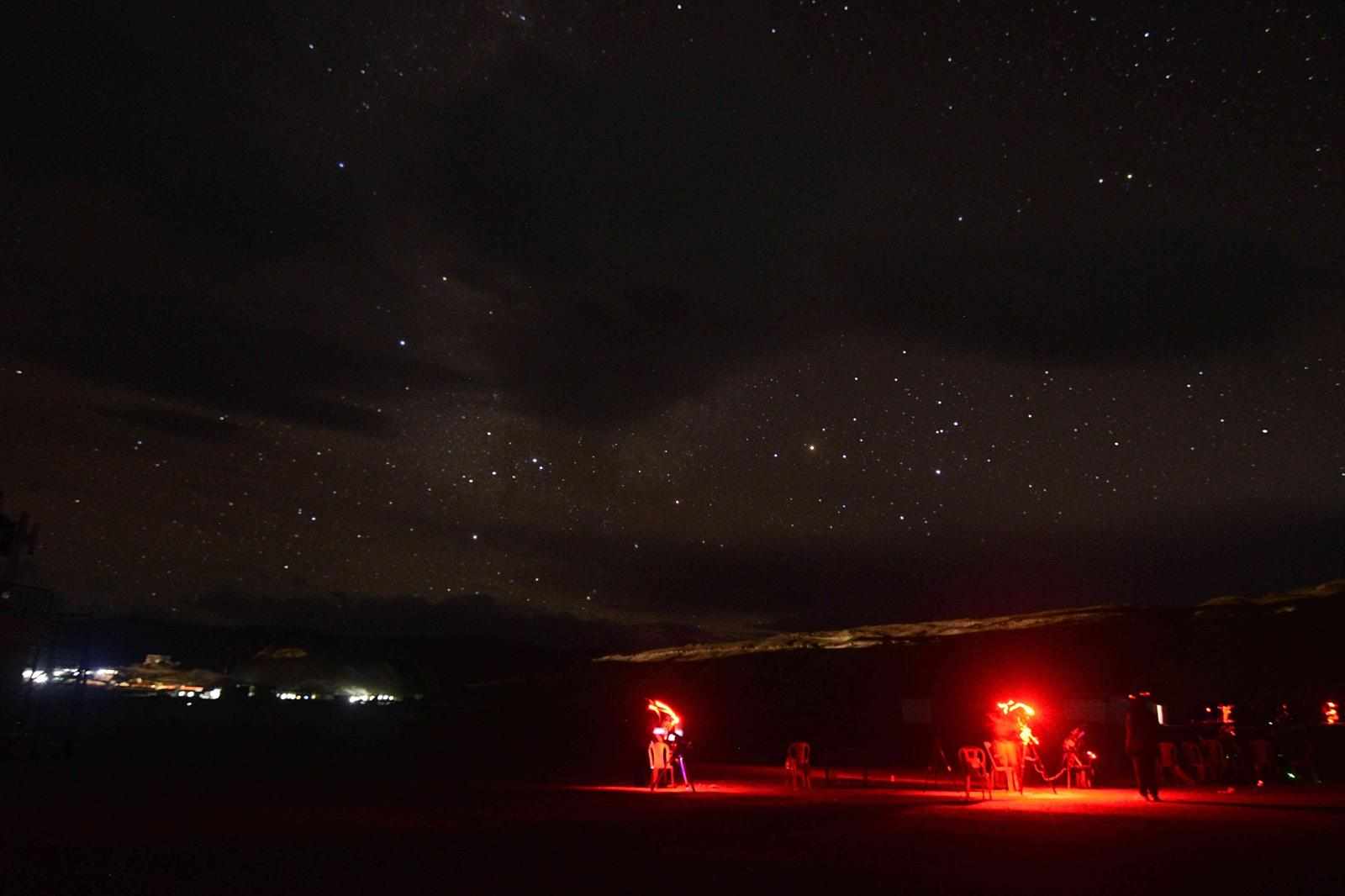
And wrapping up on four successive early mornings, it would strike me: I hadn't thought about the cold much at all. Adrenaline has its uses.
***
Postscript: After I returned home to Bombay, some astronomical news had us scanning our Hanle photographs closely. On September 21, an amateur in Australia had discovered a supernova in Sagittarius. A supernova is a star that, at the end of its life, explodes. For a short while then, depending on how far away they are, they can become bright objects in the night sky. One such was in 1987, what astronomers know as Supernova 1987A. Though remember that SN 1987A was about 170,000 light years away, so the actual explosion happened not in 1987, but 170,000 years earlier. It just became visible to us in 1987.
Compared to 1987A, this Sagittarius supernova is faint. But from the reports, I knew where to look for it in my photographs. There is nothing in that spot in my photographs from September 19 and 20.
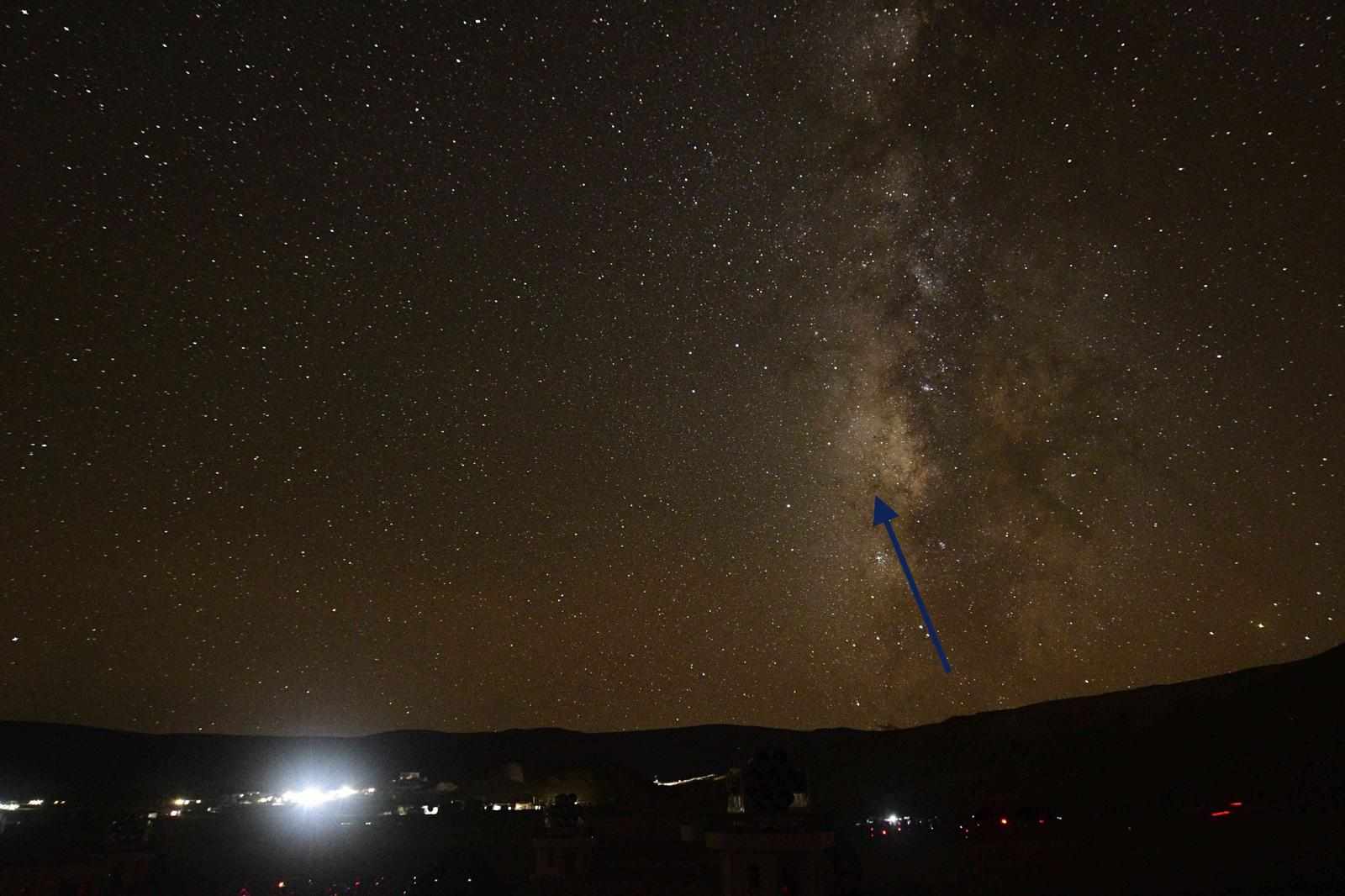
But to my delight, the supernova is present in a photograph from September 22.

I have a timelapse video of that part of the sky from September 21. I played it and watched like a hawk, hoping the supernova had appeared in that particular 2-hour period. No luck!
These photos were taken at the Hanle Dark Sky Reserve Star Party 2025. The Star Party was organised by Indian Institute of Astrophysics, Department of Wildlife, Union Territory of Ladakh, and the Bhabha Atomic Research Centre. The Hanle Dark Sky Reserve is a joint venture between the Indian Institute of Astrophysics, the Union Territory of Ladakh, the Ladakh Autonomous Hill Development Council, Leh, and the local communities.
(This article is the first of a two part series. It was first published here.)





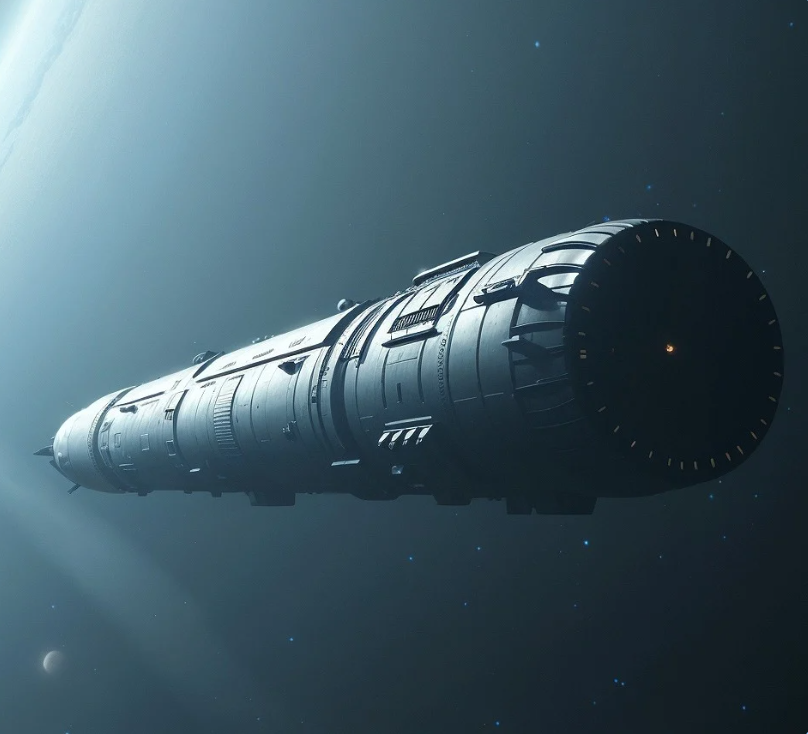
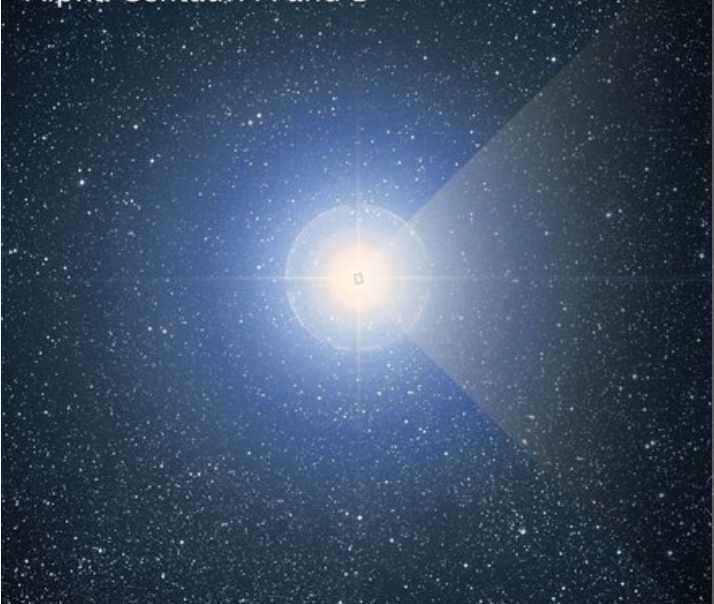
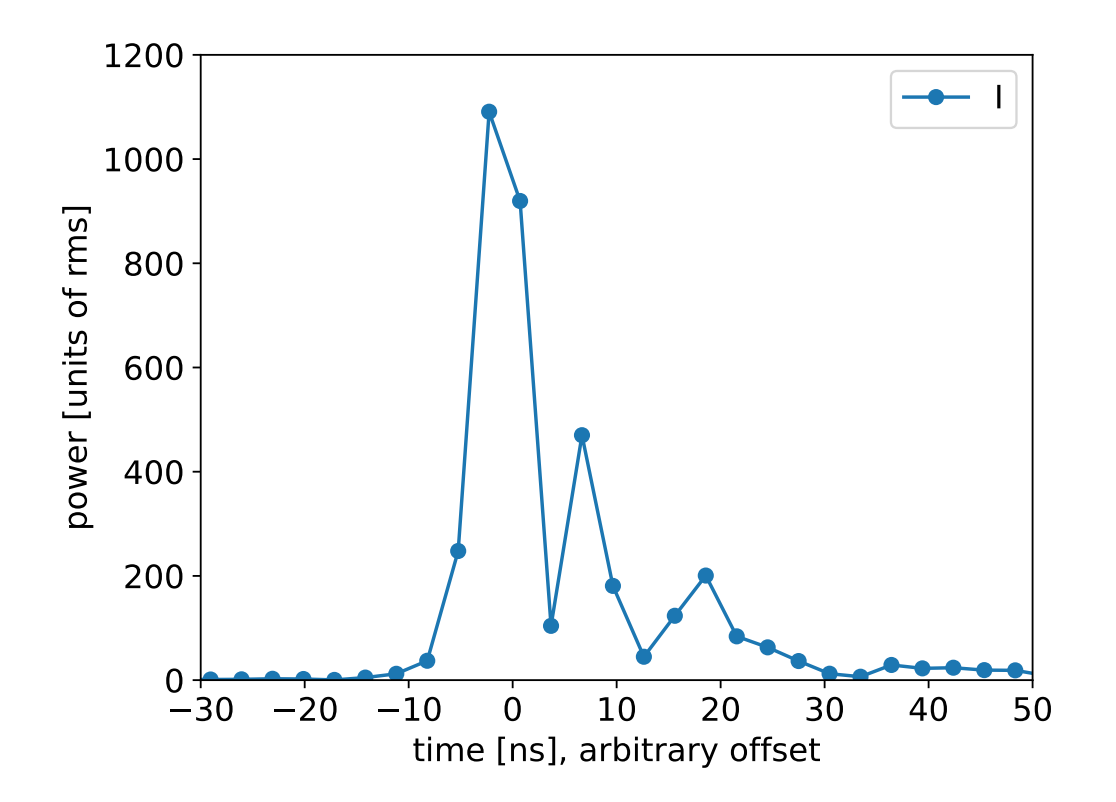







Write a comment ...